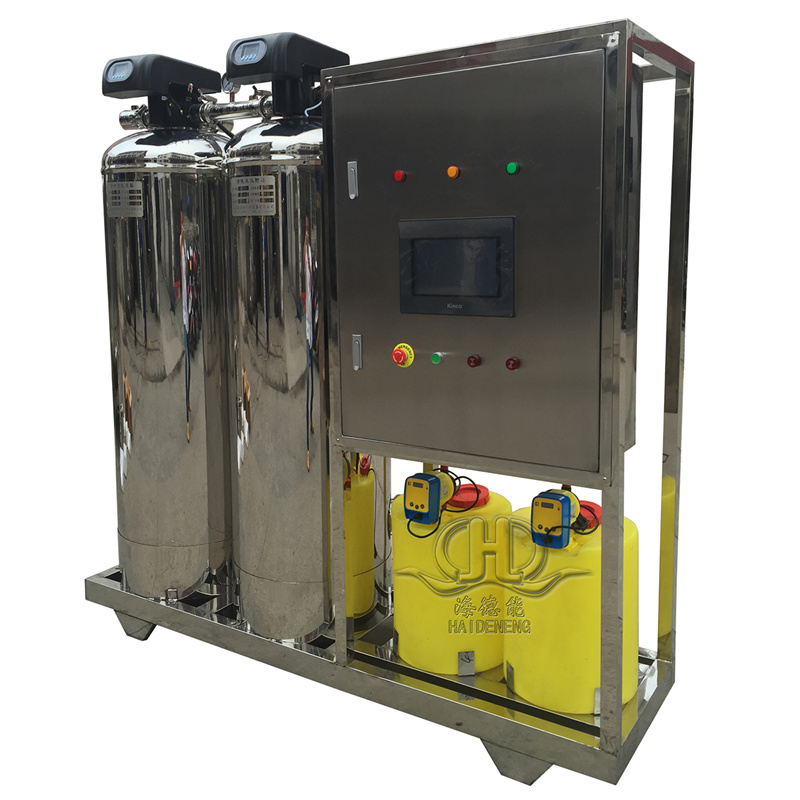Mechanical Filtration Activated Carbon Filtration Primary Reverse Osmosis Water Purification Equipment
Product description
mechanical filtration
Principle:
Using one or several filtering media, under a certain pressure, the original liquid is passed through the media to remove suspended solids, condensed flakes, and adhesive substances that cannot be removed by precipitation methods, thereby achieving the purpose of filtration.
Common media:
generally quartz sand, anthracite, granular porous ceramics, manganese sand, etc., can be selected and used according to actual needs.
Function:
As a pretreatment unit, it reduces the turbidity of raw water, provides relatively clean inlet water for subsequent activated carbon filtration and reverse osmosis treatment, reduces pollution and blockage of subsequent equipment, and extends its service life.
Activated carbon filtration
Principle:
Activated carbon has dual characteristics of physical adsorption and chemical adsorption, which can selectively adsorb various substances in tap water, such as residual chlorine, organic matter, heavy metal ions, etc., to achieve decolorization, deodorization, removal of chemical pollution and volatile organic compounds.
Common types of activated carbon:
Coconut shell activated carbon is a commonly used type, which is made from high-quality coconut shells and processed through a series of production processes. It has the advantages of developed pores, good adsorption performance, high strength, easy regeneration, and economic durability.
Function:
Remove odor, color, residual chlorine, colloids and other impurities from water, improve the taste and odor of water quality, and adsorb some harmful substances to the reverse osmosis membrane, protect the reverse osmosis membrane from pollution and damage, and improve the operating efficiency and water quality of the reverse osmosis system.
First level reverse osmosis
Principle:
Under pressure, a reverse osmosis membrane (Ro membrane) with extremely fine pore size is used to allow water to pass through while impurities such as salt are intercepted, achieving the separation of water and solutes. This can effectively remove charged ions, inorganic substances, colloidal particles, bacteria, and organic substances from water.
Features:
It has a high desalination rate and water reuse rate, can intercept solutes with a particle size of several nanometers or more, can remove various pollutants in water, such as heavy metals, bacteria, viruses, etc., and produces high-quality pure water; Using low pressure as the membrane separation power, the separation device is simple, easy to operate, maintain, and control, and the site is safe and hygienic.
Application areas:
Cleaning water for electronic components such as integrated circuits and silicon chips in the electronics industry; Purification and preparation of purified drinking water and beverage water in the food and beverage industry; Process water and formulation water in the pharmaceutical industry; Production water and process water in the chemical industry; Boiler feedwater in the power industry; The recycling of precious metals from seawater desalination and electroplating rinse water in the field of environmental protection.
Advantages of combination equipment
Synergistic effect:
The three technologies of mechanical filtration, activated carbon filtration, and primary reverse osmosis work together to form a complete water treatment system that can remove various impurities and pollutants from water at different levels, achieve deep purification of raw water, and meet the water quality requirements of different users.
Improving water quality:
Through multi-stage filtration and reverse osmosis treatment, almost all impurities such as suspended solids, colloids, organic matter, heavy metals, bacteria, viruses, etc. in water can be effectively removed, resulting in high purity water that meets the standards for drinking purified water or industrial production water.
Extending equipment lifespan:
Mechanical filtration and activated carbon filtration, as pre-treatment processes, can effectively reduce the turbidity of raw water, remove residual chlorine and organic matter, reduce the pollution and blockage of reverse osmosis membranes by these impurities, thereby extending the service life of reverse osmosis membranes, reducing maintenance costs and replacement frequency of equipment.













